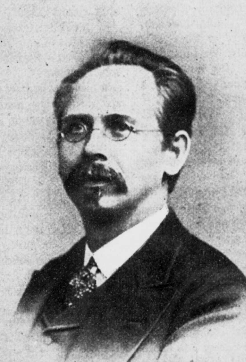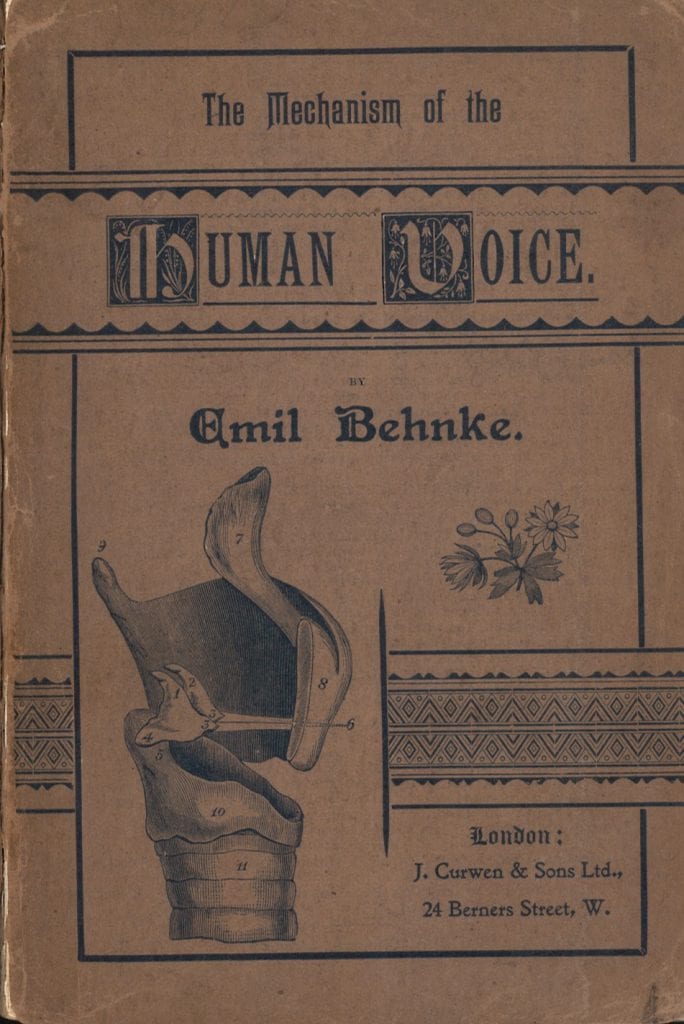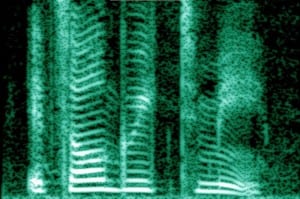There is, perhaps surprisingly, a large amount of literature on Deaf people and music. In response to a Guardian article which mentioned deaf children feeling the vibrations of instruments here is some suggested reading:
Books / Reports:
Beament J
How we hear music: the relationship between music and the hearing mechanism.Woodbridge, Boydell Press; 2001.
Written for music students but covers the physical basics of hearing music.
RNID DW
Glennie E
Good vibrations: my autobiography. 1990, Hutchinson.
RNID Biography
Marcus H
Music for all: an investigation into the value of music for deaf people. Unpublished MA thesis, 2001, University of Sheffield.
RNID C7234 (reference only)
Rigney M
Deaf side story: deaf sharks, hearing jets, and a classical American musical.Washington DC; Gallaudet University Press 2003.
The story of a collaborative staging of West Side Story by two American Colleges, one of which was Illinois School for the Deaf.
RNID YBX G
Chapters & Articles:
Abdi, S et al
Introducing music as a means of habilitation for children with cochlear implants. INTERNATIONAL JOURNAL OF PEDIATRIC OTORHINOLARYNGOLOGY, 2001, 59(2), 105-113.
Almost famous. DEAF ARTS UK, 2003, 21, 19.
Interview with student flautist Ruth Montgomery.
Annear P
The seashell gamelan. HEARING CONCERN, 2000, 8 (2), 12-13.
Music work at the Royal School for the Deaf (Manchester)
Ash A
Sign song with Caroline Parker. DEAF ARTS UK, 1999, 8, 17.
Brief report of sign song workshop led by sign song artist Caroline Parker.
Available online at: www.deafed.net/PublishedDocs/970723b.htm [last accessed on 20/11/12].
Barron P
They said Janine wouldn’t make it as a singer – now she’s a star! HEARING CONCERN, 2003, 11 (2), 18-19.
Features opera singer Janine Roebuck.
Benari N
Inner rhythm: dance and music for hearing impaired children. MAGAZINE (BRITISH ASSOCIATION OF TEACHERS OF THE DEAF), 1996, Nov, 17-19.
Boone M
Music especially adapted for hard of hearing people. IFHOH JOURNAL, 1990, 11 (3), 17 18.
(Reprinted from SHHH, 1987, Nov Dec.)
Carr G
The development of listening skills, in ‘Audiology in education’, McCracken W, Laoide-Kemp S (eds).London, Whurr; 1997. pp.385-411
Half of the chapter is subtitled ‘Music and musical experience’.
RNID PYB GJ
Chasin M
Hear the music … or not. HEARING JOURNAL, 2004, 57 (7), 10-16.
20 tips from the author on listening to music through hearing aids.
Chasin M
Hearing aids and music. TRENDS IN AMPLIFICATION, 2004, 8 (2), 35-47.
Chasin M
Music and hearing aids. HEARING JOURNAL, 2003, 56 (7), 38, 38, 40-42.
Study of the technical requirements of a hearing aid suitable for hard-of-hearing musicians and listeners.
Cheng W
A musical season. SHHH, 1990, 11 (6), 20 23.
Profile of deaf violinist Wendy Cheng.
Clewes N
A musical journey. NETWORK, 2003, 69, 13-14.
Personal account by cochlear implant recipient deafened at 16.
Clewes N
Music workshop held at the AGM. NETWORK, 2003, 70, 7-8.
Workshop for deafened adults led by members of the London Symphony Orchestra.
Creativity
BATOD MAGAZINE, November 2004.
A special issue of the BATOD Magazine which includes a number of short articles on music in deaf education. A list of contents and short abstracts can be found at:
http://www.batod.org.uk/index.php?id=/publications/magazine/index/year-04/nov-04.htm
Dalgarno G
Enabling hard of hearing people to hear music and enjoyably. HEARING CONCERN, 1996, 1 (1), 12-13.
Enabling for Music Project, based at the Department of Electronics, University of York, carries out research and provides practical advice on using technology to help hard of hearing, deaf, deafened, physically disabled and partially sighted people enjoy music.
Dalgarno G
Music appreciation and deafness. NEWSLETTER (NATIONAL COCHLEAR IMPLANT USERS ASSOCIATION), 2004, 21, 7-9.
Dalgarno G
How new technology can help you enjoy music. HEARING CONCERN, 1999,7 (2), 14-16.
Dalgarno G
Music for deaf and partially hearing people with an emphasis on the application of technology to aid perception. Part 3. The scope through electronic equipment and computers. ASSOCIATION MAGAZINE, BATOD, 1989, Mar, 10 16.
Dalgarno G
Music for deaf and partially hearing people with an emphasis on the application of technology to aid perception. Part 4. Visual and tactile representation of music. ASSOCIATION MAGAZINE, BATOD, 1989, May, 8 11.
Deaf cellist wins international award. BRITISH DEAF NEWS, 2002, Aug, 7
Features profoundly Deaf Catriona Hetherington.
Dryden R
Music comes to Margate. TALK, 1995, 158, 8.
Music programme at the Royal School for Deaf Children, Margate.
Egan D
Keeping a song in her heart. SEE HEAR, 1996, Jun, 8-9.
Interview with music teacher Valerie Hoppe, deafened in mid-career, and founder of Life after Deafness (LAD), a support group for deaf and hard of hearing people working in the arts.
Edwards J
The Beethoven Fund for Deaf Children in association with the Elizabeth Foundation: Claus Bang master class, 10th-12th March 1995. ASSOCIATION MAGAZINE (BATOD), 1995, Sep, 4.
Fawkes, W. G., & Ratnanather, J. T.
Music at the Mary Hare Grammar school for the deaf from 1975 to 1988. Visions of Research in Music Education, 14 2009.
Folts M
Deaf Children Cannot Play a Musical Instrument…Can They? 1977, VOLTA REVIEW, 79 (7), 453-456.
Franklin J
We got rhythm! TALKING SENSE, 2001, 47 (1), 26-27.
Using Aurhythmics to give access to sound and music for deafblind children at Sense’s Family Centre in Ealing.
Gfeller K et al
Recognition of “real-world” musical excerpts by cochlear implant recipients and normal-hearing adults. EAR AND HEARING, 2005, 26(3), 237-250.
Gfeller K, Knutson J E
Music to the impaired or implanted ear. ASHA LEADER, 2003, 8(8), 1, 12-15.
Hart P
Music: a vehicle for communication. DEAF BLIND EDUCATION, 1989, 4, 19 20.
Gfeller K et al
Musical backgrounds, listening habits, and aesthetic enjoyment of adult cochlear implant recipients. AMERICAN JOURNAL OF AUDIOLOGY, 2000, 11(7), 383-406.
Gfeller K et al
Musical involvement and enjoyment of children who use cochlear implants.VOLTAREVIEW, 2000, 100(4), 213-233.
Gfeller K et al
Preliminary report of a computerized music training program for adult cochlear implant recipients. JOURNAL OF THE ACADEMY OF REHABILITATIVE AUDIOLOGY, 1999, 32, 11-27.
Hay J
Face to face: Colin Thompson. BRITISH DEAF NEWS, 1989, 20(3), 7 8.
Interview with Colin Thompson, RNID Regional Officer (East), about his performances of signed pop songs, family background, and views on deaf education.
Hummel C
The Value of Music in Teaching Deaf Students. 1971,VOLTAREVIEW, 73(4), 224-228, 243-249.
Hawley R
Learning in harmony. TALKING SENSE, 2002, 47 (2), 24-25
Hickish E
A programme for aurhythmics in Cornwall. TALK, 1993, 148, 8-9.
Ivankovic P, Ghilpatrick I
Let’s start the music. PERSPECTIVES IN EDUCATION AND DEAFNESS, 1994, 12 (5), 12-14.
Music activities for preschool children.
Kirk T
How to make a musical chair. TALKING SENSE, 1989, 35(4), 4 5.
‘Listening’ to music through a vibrating chair
Liemohn W, Hargis C, Winter T, Wrisberg C
Rhythm production/perception by deaf students. VOLTA REVIEW, 1990, 92 (1), 13-24.
Liston S L, Yanz J L, Preves D, Jelonek S
Beethoven’s deafness. LARYNGOSCOPE, 1989, 99 (12), 1301 1304.
Leal M
Music perception in adult cochlear implant recipients. ACTA OTO-LARYNGOLOGICA, 2003, 123 (7), 826-835.
Looi V, Sucher C, McDermott H
Melodies familiar to the Australian population across a range of hearing abilities. AUSTRALIAN & NEW ZEALAND JOURNAL OF AUDIOLOGY, 2003, 25 (2), 75-83.
MCCRACKEN W, SUTHERLAND H,
Music for hearing-impaired children in Deaf ability not disability: a guide for parents of hearing impaired children: 1991
RNID YBX S
Moore E
BATOD response to the interim reports for music and physical education produced by the National Curriculum Working Groups for these subjects. ASSOCIATION MAGAZINE, BATOD, 1991, Sept, 2 3.
Mitani C et al
Music recognition, music listening, and word recognition by deaf children with cochlear implants. 2007, EAR AND HEARING, 28 (2 Supplement), 29S-33S.
Myers M
When music becomes magic. VOLTA VOICES, 2006, 13 (1), 22-23.
Reports on the successes of a US schoolgirl with a cochlear implant.
Parker C
Sign singing. SIGN MATTERS, 2004, Nov, 16-17.
Reports on a workshop held at the British Deaf Association following on from the popularity of the ‘Deaf Idol’ contest.
Perry N
Workshop 5: Music making for deaf children. In MITCHELL H, IZATT E. Empower ’97: international conference on deaf education. pp. 76-77.
RNID C6967 (REF), C6968
Rocca C
A positive musical experience. 2006, BATOD MAGAZINE, November, 13-15.
Comment upon teaching music at the Mary Hare School for the Deaf.
Signing opera. DEAF ARTS UK, 1998, 7, 8.
English National Opera project with deaf pupils in Exeter.
Shaw J
Teaching music as an aid for speech training of hearing impaired students. ACEHI JOURNAL, 1989, 15 (3), 114 120.
Signing choir heralds Year of Disabled. TALK, 2003, 193, 44.
News item about the signing choir at the Royal School for the Deaf, Derby.
Singers have it in hand. ONE IN SEVEN, 1999, 9, 9.
News item about Music in Motion, a Birmingham-based group of deaf, hard of hearing, and hearing people who sign-interpret pop songs.
Stabej, K.K. et al.
The music perception abilities of prelingually deaf children with cochlear implants (Review) International Journal of Pediatric Otorhinolaryngology Volume 76, Issue 10, October 2012, Pages 1392-1400
Stewart D A et al
Sign language interpreting: exploring its art and science. 1998. pp. 120-121 deal with interpreting songs.
RNID UTB TNX N
Suzor’e: the IV International festival of Signed Songs. BRITISH DEAF NEWS, 2003, Apr, 16-17.
Shearer P D
The deafness of Beethoven: an audiologic and medical overview. AMERICAN JOURNAL OF OTOLOGY, 1990, 11 (5), 370 374.
Spears D
Hearing without listening. SOUNDBARRIER, 1990, 40, 11 12.
Interview with deaf percussionist Evelyn Glennie.
Spanbauer P
Movement arts: unlocking the world. PERSPECTIVES IN EDUCATION AND DEAFNESS, 1990, 8 (3), 12 15.
Swaiko N
The role and value of an eurythmics program in a curriculum for deaf children. AMERICAN ANNALS OF THE DEAF, 1974, 321-324.
Vistamusic in sight and in touch. TALK, 1990, 135, 18 19
Vistamusic is a visual/tactile method of making music using a computer, developed by Gordon Dalgarno.
Wolf F
Dance of life. TALKING SENSE, 2002, 47 (2), 18-21.
Article on creative arts for deafblind people, which features 9-year-old percussionist Thomas Knight.
Web Resources:
www.matd.org.uk – Music and the deaf; a charity that runs music and performing arts workshops in schools for deaf and hard of hearing children.
http://www.musicinmotioncharity.co.uk/ – An English charity group that performs popular songs in BSL.
www.zen59695.zen.co.uk/etsam/efm.htm – Enabling for Music; a charity dedicated to using technology to help people with hearing difficulties listen to music.
 Emil Behnke (1836-1892) was born in Stettin, the son of a merchant, but became a naturalized British subject. From around 1860 he began to study the voice, and “the physiological aspects of singing and speaking” (People, Places, and Things). He sang baritone with an opera company, before moving to England in 1865 (Musical Herald, 1892). He was one of the foremost voice trainers of the mid to late 19th century, in fact his obituary in The Times practically attributes the foundation of a new discipline to him:
Emil Behnke (1836-1892) was born in Stettin, the son of a merchant, but became a naturalized British subject. From around 1860 he began to study the voice, and “the physiological aspects of singing and speaking” (People, Places, and Things). He sang baritone with an opera company, before moving to England in 1865 (Musical Herald, 1892). He was one of the foremost voice trainers of the mid to late 19th century, in fact his obituary in The Times practically attributes the foundation of a new discipline to him: Curwen, J Spencer. The Musical Herald; London 535, (Oct 1, 1892): 291-294
Curwen, J Spencer. The Musical Herald; London 535, (Oct 1, 1892): 291-294 Close
Close


